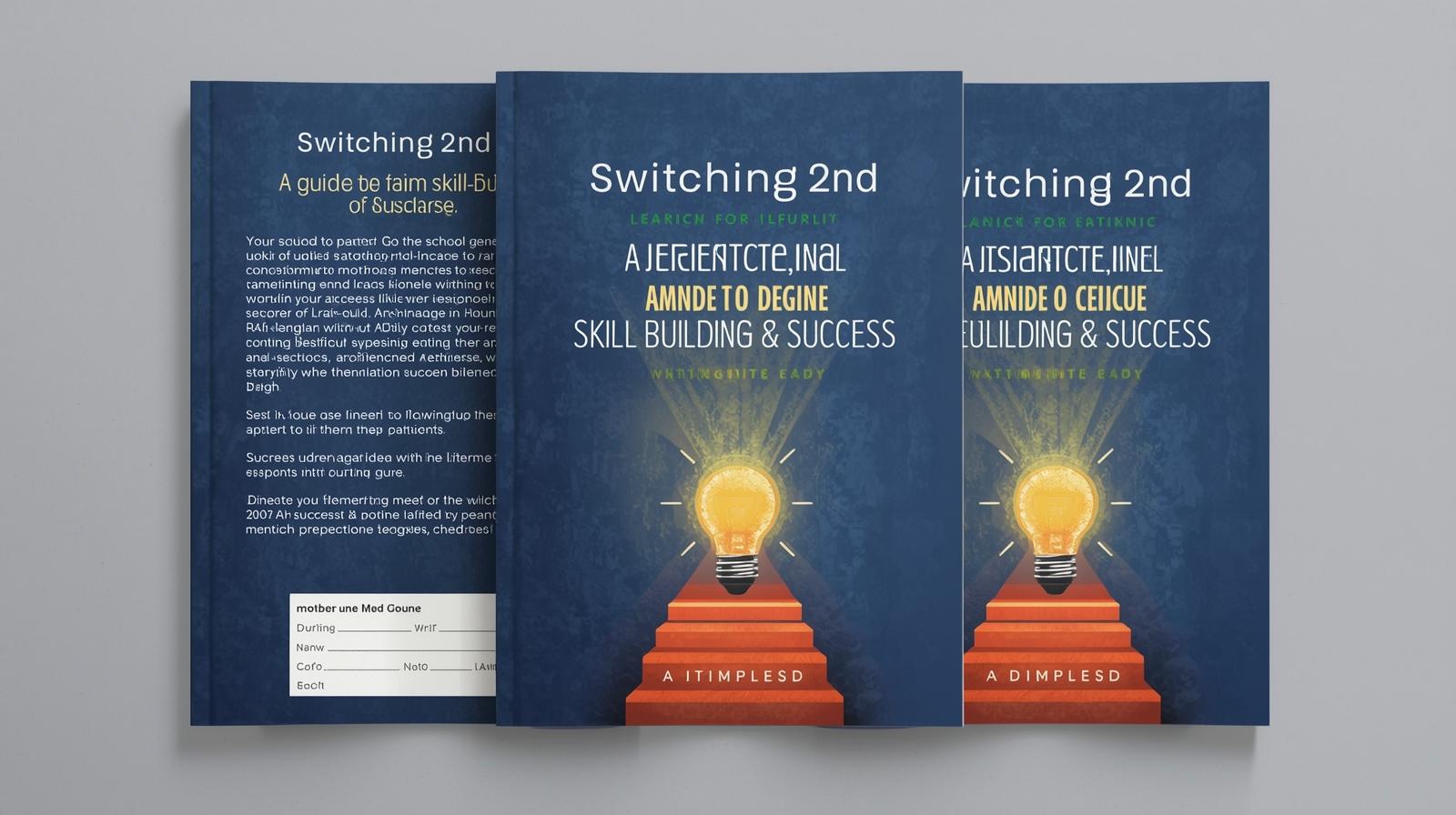In today’s fast-paced world, the pursuit of performance enhancement and productivity improvement can often feel overwhelming. Whether you’re aiming to level up your career, improve your fitness, or acquire new skills, having a method to guide your growth is essential. One of the most effective strategies to achieve this is through Switching 2nd, a concept that is transforming how people approach personal development across various fields.
This modern technique encourages individuals to shift from a basic approach to a more strategic, growth-oriented mode, ultimately enhancing their overall performance. In this article, we will explore what Switching 2nd means, why it’s gaining popularity, and how individuals and organizations are using it to upgrade their performance in areas like education, gaming & eSports, sports, and business & leadership.
What Does “Switching 2nd” Mean?
At its core, Switching 2nd refers to the act of moving from a foundational approach (often the default or beginner mode) to a more advanced and refined state of action. This transition is much like shifting gears in a vehicle – the first gear gets you started, but the second gear gives you more speed, smoother control, and better efficiency. It represents a mental shift that encourages strategic thinking and habit upgrading for faster skill development and better outcomes.
Switching 2nd emphasizes the importance of intentional actions and focused effort. Instead of staying in the comfort of the “first mode”—whether that’s the beginner stage of learning or habitual behavior—switching 2nd mode encourages a transition to a more empowered, goal-setting state. It’s not just about working harder; it’s about working smarter, using cognitive engagement to maximize your potential.
Why the Concept of “Switching 2nd” Is Gaining Popularity
The popularity of Switching 2nd can be attributed to the fact that people today want faster results, but without the overwhelm that often comes with drastic changes. This concept provides an opportunity to experience self-improvement without the need for extreme shifts or stressful challenges. Instead of making large, intimidating jumps, switching 2nd promotes incremental improvements, allowing for manageable steps toward greater effectiveness.
Moreover, the digital learning communities and sports coaching platforms have embraced this concept as it encourages both active learning and analytical thinking. As individuals begin to see the benefits of mental engagement and focused learning, the concept of Switching 2nd gains more traction. It aligns with the global trend of embracing modern self-improvement methods that enhance personal development in a more strategic and impactful way.
How Different Industries Use “Switching 2nd”
The beauty of Switching 2nd lies in its applicability across various industries. Let’s explore how different fields are implementing this approach to elevate performance and productivity.
1. Sports Training
In sports training, coaches often use Switching 2nd to help athletes transition from warm-up mode to competitive mode. This shift involves not only increasing focus but also applying sharper techniques and enhanced team coordination. By making this transition, athletes can experience significant improvements in their overall performance enhancement, pushing past the limitations of basic effort to reach their peak potential.
2. Education & Skill Development
In education and skill development, Switching 2nd encourages learners to move from passive to active learning. The traditional method of memorizing facts is replaced by strategic thinking and the application of knowledge in real-world contexts. Students are taught to move from simply guessing to analyzing, and from basic thinking to critical thinking. By embracing cognitive engagement, learners develop deeper, longer-lasting skills, ultimately accelerating their personal development.
3. Business & Leadership
In the business world, Switching 2nd is a powerful tool for business leadership. Professionals use it to transition from reactive to proactive work habits and from basic decision-making to smarter, leadership-focused thinking. By shifting to a more focused effort mode, professionals gain clarity and increase their productivity. Business and leadership coaches emphasize intentional actions and task prioritization to improve decision-making and strategic outcomes.
The Psychology Behind Switching 2nd
The concept of Switching 2nd taps into two critical psychological principles: the growth mindset and cognitive engagement. These principles form the backbone of the approach, helping individuals overcome limitations and unlock their potential.
The Growth Mindset & Cognitive Engagement
A growth mindset is the belief that abilities and intelligence can be developed through hard work, learning, and perseverance. Switching 2nd aligns perfectly with this mindset by encouraging individuals to embrace challenges and continuously improve, rather than staying stagnant in a comfortable or predictable mode.
Cognitive engagement refers to the mental effort and focus required to achieve higher levels of performance. When individuals switch from default modes to more engaged, focused states, they experience increased alertness, problem-solving capabilities, and faster learning. This mental shift is small, but its impact is profound, resulting in faster skill improvement and greater overall efficiency.
How to Apply “Switching 2nd” in Real Life
Adopting Switching 2nd in your daily life requires awareness, practice, and consistency. Here are simple steps to integrate this approach into your routine:
1. Identify Your “First Mode”
Your “first mode” is your starting point, whether that’s your comfort zone or habitual way of working. Understanding this state is crucial to knowing where you need to improve.
2. Define Your “Second Mode”
What does a more focused, strategic version of yourself look like? The second mode involves setting higher standards for your performance. Whether it’s better focus, enhanced technique, or more productive habits, define what an upgrade looks like for you.
3. Create a Trigger
Having a cue or trigger can help you shift from your first mode to your second. This could be a phrase, a specific routine, or a behavior that signals you to move into a strategic mode.
4. Practice the Transition Daily
Like any new habit, switching 2nd requires consistent practice. Over time, this transition will become second nature, and you’ll find it easier to move from default modes to your more effective, intentional state.
5. Measure Your Progress
Track the improvements you make as you apply the concept of Switching 2nd. Recognizing even small wins helps reinforce the growth mindset, ensuring you stay on the path of continuous self-improvement.
Benefits of Adopting the Switching 2nd Approach
The benefits of adopting Switching 2nd are wide-reaching. Here’s how it can improve your performance and productivity:
1. Faster Skill Improvement & Increased Focus
By shifting into a more engaged mode, you accelerate skill development. The focus that comes with Switching 2nd helps eliminate distractions and increase your ability to perform at a higher level.
2. Better Decision-Making & Improved Productivity
The mental shift fostered by Switching 2nd helps you make more thoughtful, strategic decisions. As a result, you work smarter and become more productive, achieving better outcomes in less time.
3. Boost in Confidence
As you see improvements, your confidence grows. You’ll become more adept at task prioritization and goal setting, and the ability to make effective transitions will reinforce your belief in your own abilities.
Challenges People Face When Switching 2nd
Despite its benefits, switching 2nd does come with challenges. Some of the obstacles people face include:
Fear of Changing Course
Switching from one mode to another can be intimidating, especially if it requires stepping out of a comfort zone. Overcoming this fear is essential for personal development.
Poor Timing
Knowing when to switch is critical. Shifting too early or too late can disrupt your progress. Finding the right moments for transition is key to effective performance enhancement.
Overthinking the Second Option
One common challenge is overanalyzing the second option, which can lead to hesitation or indecision. Trusting the process and acting with purpose is important to avoid being paralyzed by overthinking.
Conclusion
Switching 2nd offers a simple yet powerful method for transforming how you approach challenges and opportunities in both personal and professional life. Whether you’re improving your performance in sports, education, gaming & eSports, or business & leadership, adopting this method can help you make more strategic decisions, enhance your skills, and increase productivity. By shifting to a more growth-oriented mindset, you unlock your potential for greater success and self-improvement. With practice and commitment, Switching 2nd can become a transformative tool that leads to long-term success in every area of life.
i̇ns: Origins, Symbolism, and Its Role Online
FAQs
What is skills building?
Skills building is the process of developing and enhancing personal abilities through learning and practice.
What is the best new skill to learn?
The best skill to learn depends on personal goals, but coding, data analysis, and communication are highly valuable.
What are skills strategies?
Skills strategies are plans or approaches designed to help individuals acquire and improve specific competencies.
What is the meaning of skill building?
Skill building refers to the process of acquiring, refining, or developing a particular skill set over time.
What does build your skills mean?
Building your skills means improving your capabilities and expertise in a specific area.
What is SkillsBuild?
SkillsBuild is a platform designed to provide free, accessible skills training to individuals.
How do skill builders work?
Skill builders typically offer tools, resources, and structured learning to help individuals develop new skills or improve existing ones.

